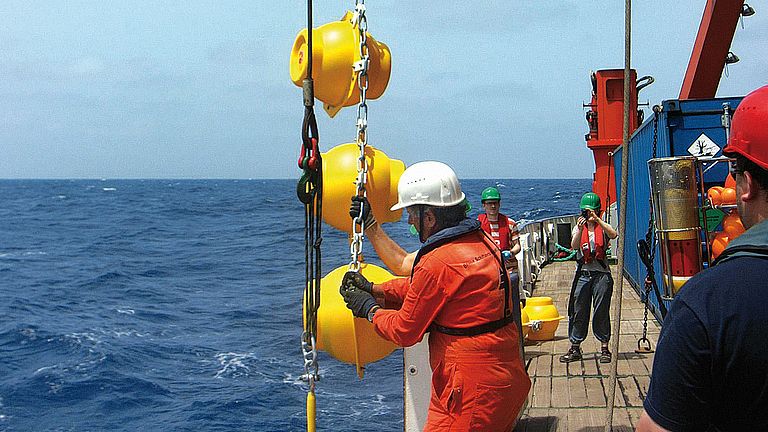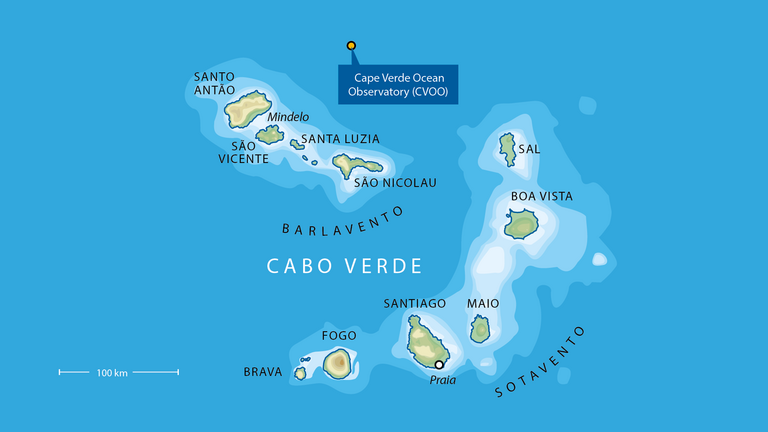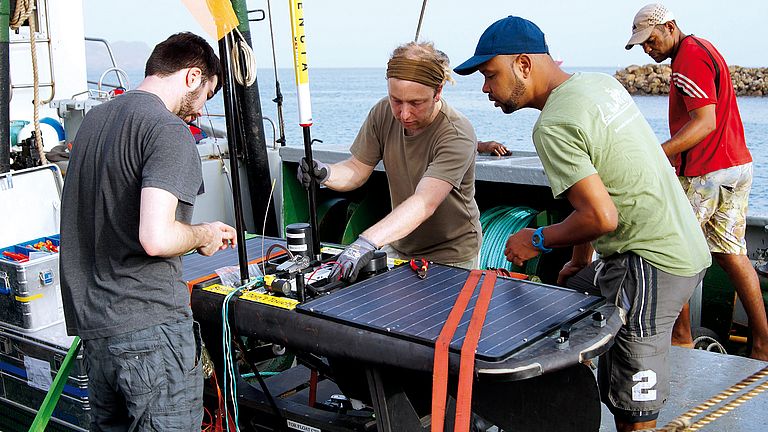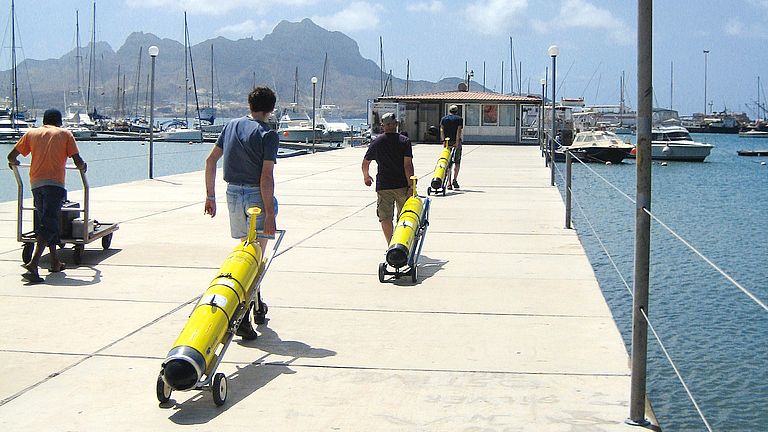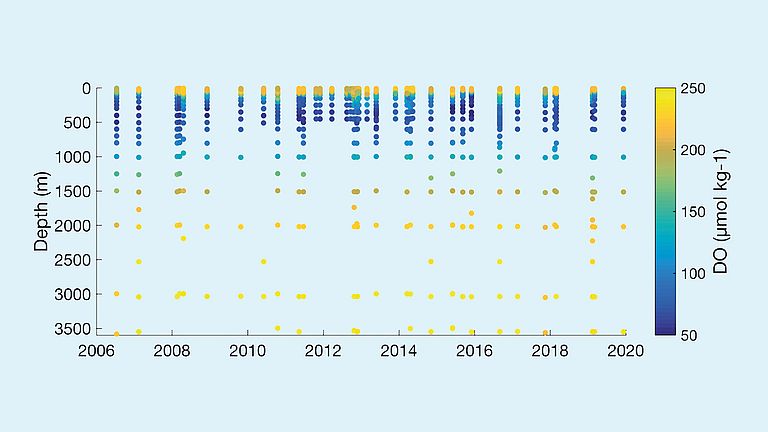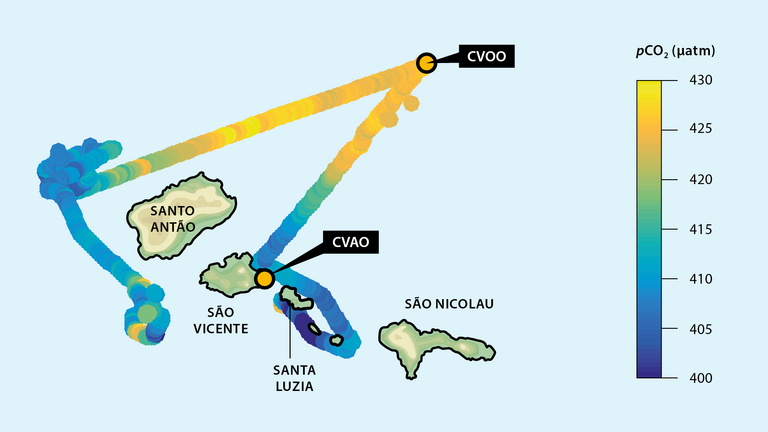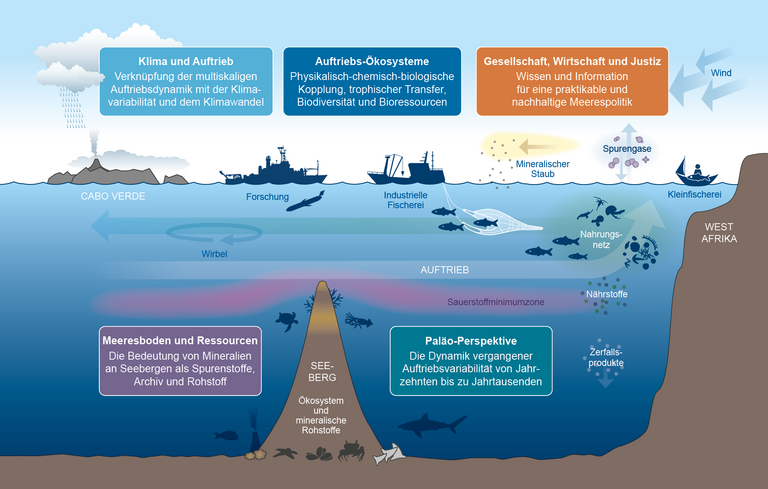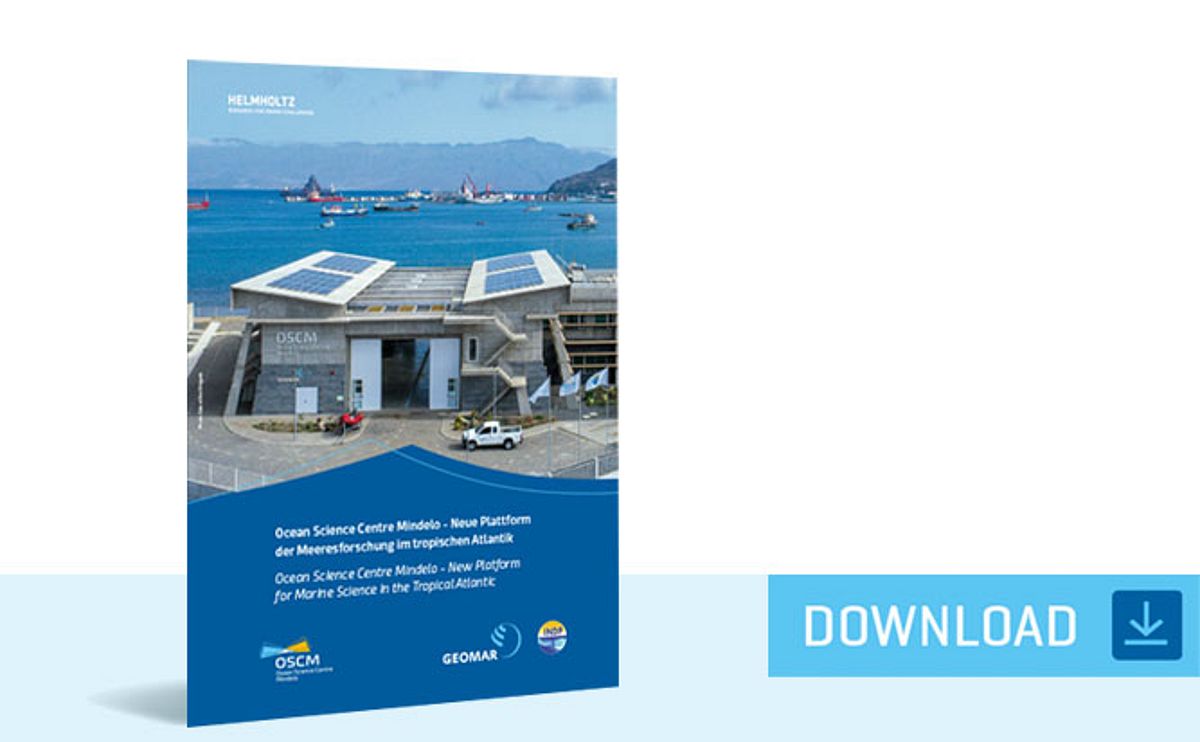Cordula Zenk
Cape Verde Coordinator at GEOMAR
Tel: +49 431 600-4209
E-mail: czenk@geomar.de

Ocean observation from the surface to the deep sea
The Cape Verde Ocean Observatory (CVOO)
About 100 kilometres northeast of the Cape Verde island of São Vicente, a long-term ocean observation station, the Cape Verde Ocean Observatory CVOO, has been operated since 2006.
The station consists of a mooring which covers the entire water column and is supplemented by regular ship-based oceanographic sampling campaigns. The autonomous sensors installed on the mooring record data at very high temporal resolution. The ship-based sampling concentrates on the collection of data that cannot be measured autonomously.
Measurements at CVOO provide time series at selected depths of important biogeochemical and biological variables, such as carbon dioxide, dissolved oxygen, particle flux, phytoplankton and zooplankton concentrations. Data on the physical environment, such as water currents, temperature and salinity, are collected with particularly high resolution in order to accurately quantify the relevant physical processes.
The time series provide a detailed picture of the temporal evolution of oceanic variables at a single geographical location but at different depths. Only the simultaneous measurement of biogeochemical, biological and physical parameters allows the identification of various process interactions. The location of the CVOO was carefully chosen to be upwind of the Cape Verde Atmospheric Observatory (CVAO) on São Vicente. With the wind blowing rather consistently at 25 - 30 kilometers per hour from northeasterly directions, the two stations are “atmospherically connected” with each other.
Autonomous Measurements of Carbon Dioxide and Oxygen
Carbon dioxide (CO2), the basis of all life on earth and at the same time a potent driver of climate change, and oxygen (O2), the lifeblood of all creatures, are two gases which are intimately linked through photosynthesis and respiration. Both in the atmosphere and in the ocean their distribution patterns and dynamics are thus strongly driven by biological processes on land and in the ocean.
The world ocean acts as a giant sink for human made CO2 and thereby significantly buffers global climate change. Predictions of possible future changes in this climate stabilizing function of the ocean require a thorough observation of the marine carbon cycle. Recent findings of the phenomenon of ocean deoxygenation, however, have not only complicated the interpretation of these atmospheric measurements but at the same time also provide insight into the reaction of the ocean system to global climate change.
The now well documented small but consistent decline of oxygen concentrations in nearly all ocean basins is indicative of a slowdown in ocean ventilation under ongoing global warming. Furthermore, any climate change driven trends in marine biological productivity would also impact on oceanic oxygen. These effects of course are not limited to oxygen but will also impact on carbon and are therefore of utmost importance for our understanding of the global carbon cycle and its future development. The tropical Northeast Atlantic around Cape Verde, with its existing oxygen minimum zone and its high biological productivity near the water surface, plays a key role in these processes.
FUTURO - Future of Tropical Upwelling Regions in the Atlantic Ocean
Existing observations are insufficient for models to make more robust projections, this is because physical, chemical and biological components of the system have not been studied in a synergistic and mechanistic way, and existing observational campaigns have largely been snapshots in space and time within systems that are highly dynamic on multiple time scales. Ultimately, this uncertainty threatens adequate adaptation of legal and economic regimes for the sustainable exploitation of upwelling systems.
To address these deficiencies, GEOMAR's Integrating Research Focus (IRF) Upwelling in the Atlantic Ocean plans to conduct the multiscale, multidisciplinary, year-round FUTURO observing campaign in the eastern upwelling system of the tropical North Atlantic during the period 2024-2026. A key component of the project is the inclusion of Cape Verde and other West African nations in the region.


